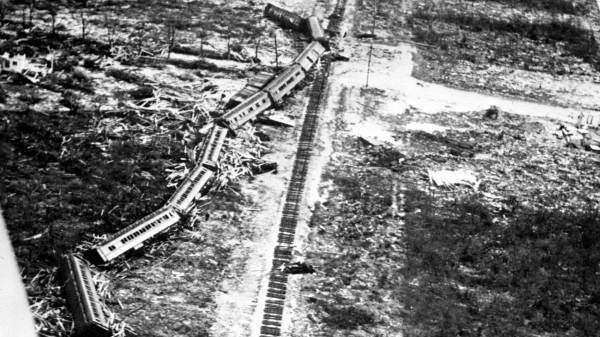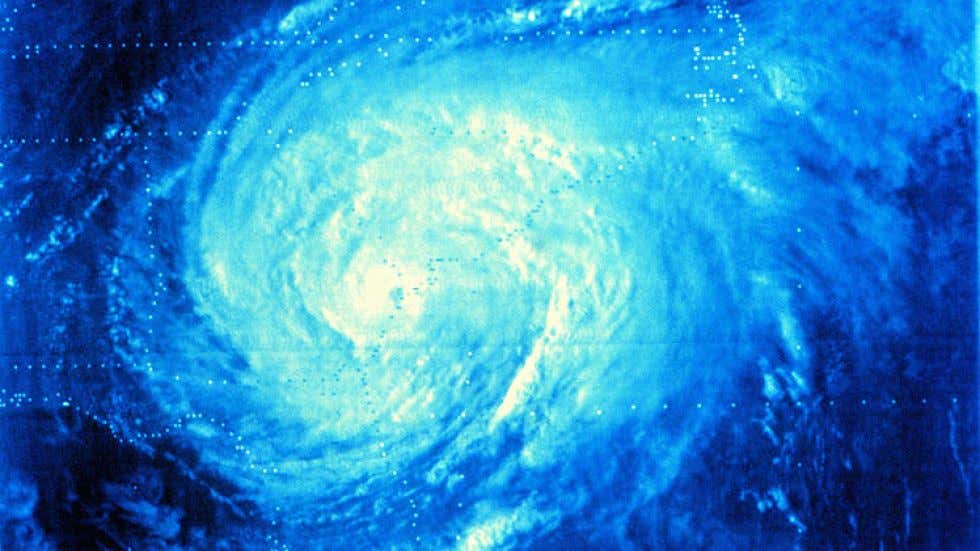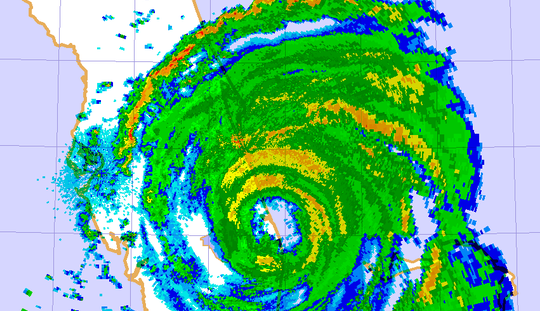Hurricanes have cast a tragic pall over a number of Labor Day weekends the past several decades. These are the five worst storms based on damage and loss of life.
Related: Logistics groups ready to help during potentially busy hurricane season
Great Labor Day hurricane (1935)
On Labor Day 1935, an unnamed storm barreled across the Florida Keys. It was the most intense of only five Category 5 storms on record to strike the U.S. coastline, packing winds of 185 mph. The Sept. 2 hurricane destroyed every structure in the upper Keys.
This storm became known as the Great Labor Day Hurricane because the official naming of Atlantic basin hurricanes didn’t start until 1953.
The Great Labor Day Hurricane killed about 500 people, among them 259 World War I veterans who were constructing the Overseas Highway and residing in government camps. Damage amounted to about $6 million, more than $100 million when adjusted for inflation.

The system was reportedly so powerful that it blasted clothing off people. The hurricane’s storm surge of 18 to 20 feet above sea level knocked down trees and buildings on Matecumbe, Islamorada and other nearby Keys. The storm also destroyed Henry Flagler’s railroad, a lifeline between Key West and the mainland.
The storm also struck well before advances in weather-tracking technology, including Doppler radar, that predict where a storm might end up. People were largely in the dark as the hurricane approached. Many of the victims had waited anxiously for an evacuation train that never came because it was washed off the tracks.
Hurricane Easy (1950)
Hurricane Easy intensified as it traveled parallel to the western Florida coast on Labor Day (Sept. 4) 1950, and then completed two loops in the northeastern Gulf of Mexico in the following days. One of those loops was near the town of Cedar Key, which stayed near the eye of Easy for two and a half hours.
Winds as high as 125 mph pummeled Cedar Key and the rest of Florida’s Nature Coast while the hurricane spun just offshore.
More than half of the houses in Cedar Key were destroyed and 90% of the remaining homes were damaged. Fishing boats were also destroyed, a major blow to the community built on the fishing industry.
Hurricane David (1979)
Hurricane David was described as South Florida’s most unwelcome guest of the 1970s. With winds between 96 and 110 mph (Category 2), the hurricane passed between Miami and Bimini, Bahamas, making landfall near West Palm Beach, Florida, on Labor Day (Sept. 3) 1979.
It paralleled the Florida coastline just inland until emerging into the western Atlantic Ocean at New Smyrna Beach, Florida, later the same day. David continued north-northwest and made its final landfall just south of Savannah, Georgia, as a minimal hurricane on Sept. 5.

Although it spared most of Palm Beach County, Jupiter and Singer Island, Florida, were hit the hardest. Winds blew down the Lake Worth broadcasting tower of radio station WJNO and toppled the steel support structure of the Palm Beach Jai-Alai fronton in Mangonia Park. The hurricane also peeled off the sheet-metal roof from a West Palm Beach storage building.
Thousands of homes and businesses lost power. The storm caused several million dollars in damage to the Palm Beach County area and more than $50 million in damage throughout the state. It spawned five tornadoes and dumped 6 to 8 inches of rain throughout South Carolina, causing heavy beach erosion. Hurricane David was blamed for several deaths.
Hurricane Elena (1985)
On Labor day (Sept. 2) 1985, Hurricane Elena made landfall near Biloxi, Mississippi. Wind gusts reached as high as 136 mph on Dauphin Island, Alabama, just east of the landfall point. Hurricane Elena produced more than a dozen tornadoes in central Florida.
In addition, more than 11 inches of rain fell in Apalachicola, Florida, and rain totals from the storm exceeded 8 inches in north-central Arkansas.
More than 500,000 people evacuated the low-lying coastal areas along the Gulf Coast. Although no deaths were reported where the center of the storm made landfall, four people died inland from causes including falling trees, auto accidents and heart attacks. Overall, Hurricane Elena caused about $1.25 billion in damage.
Related: Ida dumps deadly flooding rain on Northeast
Hurricane Frances (2004)
With a span the size of Texas, Hurricane Frances pounded Martin and Palm Beach counties just north of Miami over the 2004 Labor Day weekend. With winds up to 105 mph, the storm produced torrential rain, dumping 13 inches in some areas. It left more than 4.5 million customers without power at its peak after making landfall at the southern end of Hutchinson Island on Sept. 5, the day before Labor Day.

Hurricane Frances stripped roofs off homes, caused extreme damage to the Tiara Condominium building in Singer Island and chopped up the Lake Worth Pier into three pieces. The storm also created knee-high flooding in parts of West Palm Beach and collapsed part of Interstate 95 near Lake Worth. Frances was blamed for 47 deaths in the U.S., 37 of them in Florida.
Click here for more FreightWaves articles by Nick Austin.
You might also like:
5 states with toughest chain laws for truckers








miced
I’m making over $7k a month working part time. I kept hearing other people tell me how much money they can make online so I
decided to look into it. Well, it was all true and has totally changed my life. This is where i started…….. www.jobs70.com